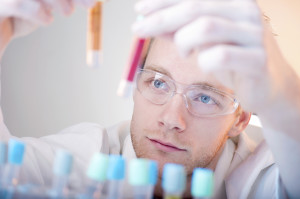Repurposing T2D Drugs to Treat T1D

 Did you know that it takes 12 years and $2.6 billion on average to move a drug from the laboratory through the development and regulatory approval pipeline and into the marketplace? That stark reality has made JDRF take a look at the benefits of repurposing some drugs already approved by the U.S. Food and Drug Administration (FDA) for other diseases to treat type 1 diabetes (T1D). While we work to achieve a cure, we want to move new treatments for T1D into the hands of those who need them as quickly and cheaply as possible.
Did you know that it takes 12 years and $2.6 billion on average to move a drug from the laboratory through the development and regulatory approval pipeline and into the marketplace? That stark reality has made JDRF take a look at the benefits of repurposing some drugs already approved by the U.S. Food and Drug Administration (FDA) for other diseases to treat type 1 diabetes (T1D). While we work to achieve a cure, we want to move new treatments for T1D into the hands of those who need them as quickly and cheaply as possible.
To mark National Diabetes Awareness Month, JDRF Chief Mission Officer Aaron Kowalski, Ph.D., himself a person with T1D, sat down with Craig Stubing, host of the “Beta Cell” podcast to discuss the differences between T1D and type 2 diabetes (T2D,) and whether some approved treatments for T2D might prove beneficial for T1D management.
In addition to the SGLT-2 inhibitor drugs mentioned in the podcast, one company is now working on a drug that inhibits both SGLT-2 and SGLT-1 (a protein that works in the intestines to move glucose from food into the bloodstream.) It’s now making its way through Phase III clinical trials as a treatment for both T1D and T2D.
Another class of T2D drugs that might be useful in treating T1D is the GLP-1 agonists. In people with T2D they stimulate the release of insulin. That’s not so important to people with T1D, since they can’t produce insulin on their own anymore. But the GLP-1 agonists could benefit people with T1D by slowing glucagon production. That prevents a condition called hyperglucagonemia, which afflicts people with diabetes, causing very high levels of high blood sugar if it’s not checked by insulin. In addition, the GLP-1 agonists slow digestion and induce a feeling of fullness, making it easier for people with T1D to adhere to their meal plans.
Why It Matters:
At JDRF, we know that it will take a while to achieve a cure, and we need treatments that will keep people with T1D as healthy as possible until then. Repurposing drugs already approved to treat other conditions—everything from gout to leukemia to high blood pressure to T2D—could make effective treatments available more quickly, more economically and more safely. Most importantly, drug repurposing will allow people with T1D to markedly improve their quality of life while we work together toward a cure.